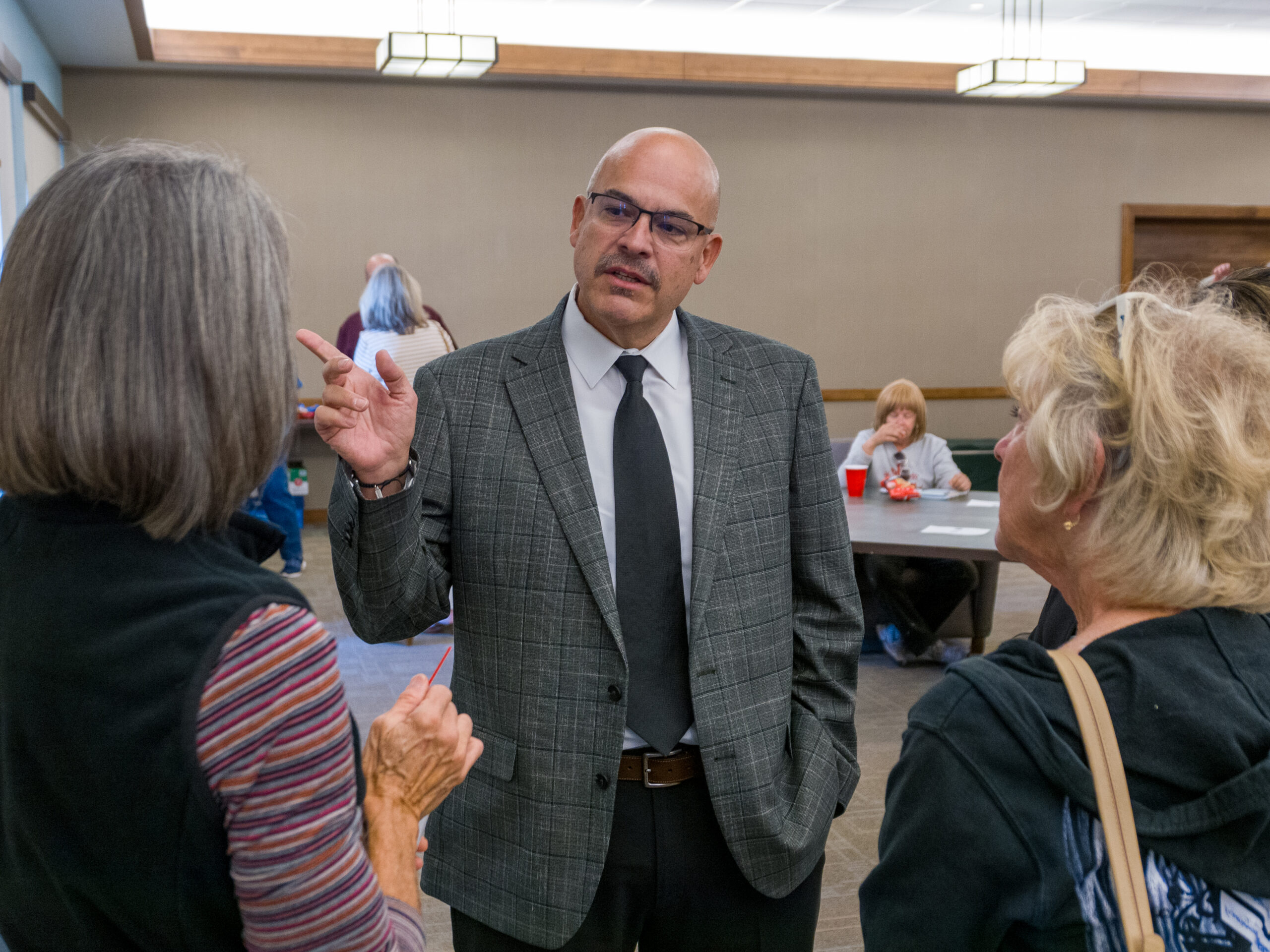The next time Verde Valley residents hear a helicopter flying overhead searching for a lost hiker, they may notice markings never before seen on rotary aircraft in Yavapai County.
Unveiled in late January, Sheriff Rescue One is the newest addition to the Yavapai County Sheriff’s Office’s fleet of search and rescue vehicles, and it is easily identified by the huge yellow YCSO seal on the nose, port and starboard sides.
The four-seat Robinson R-44 Raven II helicopter is run by Guidance Aviation, a helicopter flight school headquartered in Prescott. The Raven II was about to “time out” of its 2,200-hour lifespan before Guidance donated it to YCSO rather than sell it used for around $150,000, said Dave Roy, Guidance’s director of flight operations.
The county paid about $250,000 to refurbish the helicopter, so now it is effectively an entirely new helicopter, Roy said. A new R-44 would have cost YCSO between $450,000 and $550,000.
 “Our goal is to have a fast response time,” said Ben Lewis, a pilot and flight instructor.
“Our goal is to have a fast response time,” said Ben Lewis, a pilot and flight instructor.
Flying at 140 knots, or about 160 mph, the helicopter can take off from its pad at the Prescott Municipal Airport, be in the skies over the Verde Valley in 15 minutes and stay in the air for about three hours. It can land at the Sedona or Cottonwood airports to refuel, which takes about five minutes.
A pilot and spotter from Prescott may pick up a second spotter if the search warrants another pair of eyes. Bubbled windows allow spotters to look beneath the aircraft.
The piston-powered R-44 has a safe ceiling of about 14,000 feet but will more likely be operating a few hundred to a few thousand feet about the ground.
Part of the overhaul involved removing the left-side controls from the cockpit, allowing a YCSO spotter to keep his or her attention on the ground below without inadvertently bumping the controls. Without a copilot, the pilot’s attention has to remain solely on the controls.
“Flying a helicopter is kind of like balancing on a beach ball while patting your head and rubbing your belly,” Lewis said.
The small helicopter is not designed to drop rescuers or pick up hikers from cliff faces, but Sheriff Rescue One has “drop bags” with emergency supplies. The main mission is spotting lost and injured hikers and directing rescuers to them. If landing is a possibility, the helicopter could also unload a paramedic.
The biggest benefits to the county are the speed with which Sheriff Rescue One could arrive on the scene, and the helicopter is dedicated to operating in Yavapai County, one of the largest counties in the United States, Roy said.
For search and rescue operations until now, YCSO had to wait for the Arizona Department of Public Safety’s Ranger turbine-powered helicopters, said Chris Horton, Guidance’s assistant director of academics.
The Flagstaff and Kingman DPS helicopters also work rotating shifts, Horton said, meaning if the Flagstaff DPS helicopter is off duty or working elsewhere, the nearest Ranger crew must come from Kingman or Phoenix, both about an hour away.
The YCSO-Guidance partnership has already helped locate several lost hikers and vehicles around the county, Roy said. On one of the first visits to the Verde Valley, the still unpainted Sheriff Rescue One helped searchers locate the body of a New York hiker who fell Dec. 27 in Sedona.
Roy said he expects the Sheriff Rescue One to fly about 200 hours this year but is hoping YCSO and Yavapai County will increase those hours as the program shows its utility for search and rescue and overflight operations. Sheriff Rescue One has a lifespan of 2,200 hours before it will need to be replaced or overhauled.
Fuel and pilot salaries are funded by the county, but the pilots come from the flight school, which is partnered with Yavapai College. Roy said about 80 percent of the more than 100 students are former military personnel applying their GI Bill benefits under the Post-9/11 Veterans Educational Assistance Act of 2008.


